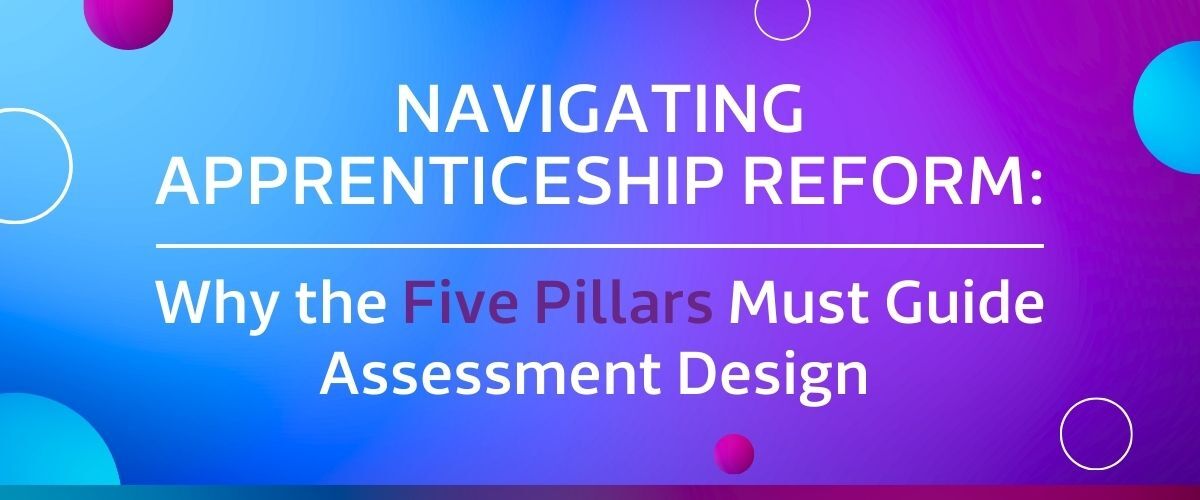They say that change is as good as a rest, but the latest reforms to the apprenticeship sector feel anything but restful for assessment organisations right now. While everyone knows that change is coming, the exact nature of the changes still feel a bit hazy, and the result is, for many, unsettling.
However, Awarding Organisations (formerly known as End-point Assessment Organisations as little as 8 months ago) don’t need to be passive in this reform. By the nature of the changes they are proposing, Skills England are asking AOs to help lead the transition, not just adapt as they are told to. AOs are being encouraged not only to step up as assessment designers, but as protectors of quality, fairness and credibility in an evolving skills sector.
It’s no small ask, but those organisations that rise to this challenge will find they have more control over their own destiny and more opportunities to shape the future. Yet one crucial aspect of its success is consistency. How can AOs, and Skills England, maintain consistency and credibility during a time of significant upheaval?
Here, we look at the proposed reforms and explain how the five pillars of reform - complexity, cost, consistency, competition and capacity - need to underpin the sector as it evolves.
Reform is needed, but how will impact assessment consistency?
The current reforms aim to tackle a number of the sectors ongoing challenges: increasing completion rates, reducing unnecessary complexity, shortening assessment windows, addressing capacity gaps, and cutting costs. We can safely say that everyone is in agreement that these are necessary changes and couldn’t come sooner.
However, how exactly are these changes going to be introduced? With reform comes uncertainty, particularly around the future role of independent assessment. The introduction of new flexibilities allowing up to 60% of assessment to be delivered internally by providers or employer-providers has raised serious questions. Can consistency and quality be maintained? What will this mean for the sustainability of independent Awarding Organisations? Unless communication improves around this aspect of reform, uncertainty (and even anxiety) will only grow.
Can AOs adapt to simpler, more cost effective assessment models?
The reforms push for simpler, more cost-effective assessment models, which puts additional pressure on Awarding Organisations to adapt quickly. Some standards may move away from requiring external assessment entirely, shifting the market dynamics and threatening some providers, particularly those that fail to adjust quickly. As a technology partner to many AOs, we’re working closely with our clients to understand these changes.
We recently hosted a workshop to bring assessment professionals together and explore the implications. It was a productive and open discussion, but what stood out most was the level of uncertainty across the sector and the deep impact it was having on confidence, and plans for the future.
Unclear direction, uncertain future
While Ofqual has provided a relatively clear view of its expectations and future role, guidance from the Department for Education (DfE) and Skills England has been lacking in detail. This has left a lot open to interpretation, leading to a widespread sense of unease. As one client put it, it feels a bit like being in a Hitchcock movie: you get just enough information to scare yourself about what might be behind the curtain. There’s growing concern that the reforms, though well-intentioned, could exacerbate the very issues they’re trying to solve if implemented without a clear, shared framework.
Why we need to return to the Five Pillars of reform
In the conversations that followed, both with clients and within the Skilltech Solutions team, it became clear: we need to make sure that any changes are underpinned by the five pillars of reform. If you’ve not heard of them before, these pillars are:
- Complexity: simplifying processes, not adding confusion
- Cost: delivering value without sacrificing quality
- Consistency: ensuring reliable, fair outcomes for all learners
- Competition: enabling a healthy, innovative assessment market
- Capacity: making the system scalable and resilient
These aren’t just policy goals. They are the foundation of a fair, effective, and trusted apprenticeship system. Any assessment redesign must be evaluated through this lens if it’s going to maintain standards in the industry, support AOs and ensure learners get the best possible outcomes, which is really the most important thing at stake.
Internal assessments don’t mean a free pass
What is critically important to note is that the increased allowance for internal assessment is not a licence to dilute independence. It should be treated as a pragmatic option, used only where it can clearly uphold or improve the five pillars. If it weakens any of them, it risks damaging learner outcomes, eroding trust, and undermining the value of the apprenticeship itself. Independent end-point assessment was introduced to ensure a level playing field, protect learners from bias, and give employers confidence in the consistency of outcomes. That purpose still matters. In fact, it matters now more than ever.
Can you find the opportunity in the challenge?
While it may not feel like it right now, this period of reform presents a real opportunity, not just to simplify processes, but to build a stronger, more credible apprenticeship system. That won’t happen by chance. It requires Awarding Organisations, providers, employers, and technology partners like us to stay focused on what really matters: fairness, quality, and trust. As we move forward, let’s not lose sight of the five pillars. They are not just a checklist, they are our compass to a better, fairer future for apprenticeships.
If you’re at currently trying to navigate the reforms and want to discuss the changes, why not join the conversation on LinkedIn? Add you voice to the dialogue over on the Skilltech Solutions page and tell us what you think should happen next to strengthen a changing skills sector.
